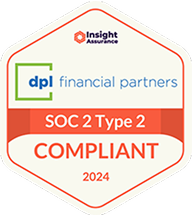Back to Press homepage
DPL Financial Partners raises $26 million after explosive growth turned backers into believers in David Lau's promise to create a guaranteed income supermarket
Oisin Breen
January 22, 2021
In The News

With $1 billion of gross sales for 2021 conceivable after mega-deal with SS&C and macro-factor tailwinds, the Louisville company (DPL Financial Partners) is ready to slug in the bigger leagues.
DPL Financial Partners just raised $26 million from Atlas Merchant Capital and Eldridge on the back of a near seven-fold increase in advisors -- growth that pushes it close to service and capacity constraints.
"We decided to raise more capital because it was simply imprudent not to. Our growth has been so tremendous we knew we were going to need a bigger boat," says founder David Lau, via email.
Lau is betting that by 2026 every RIA will need to buy and trade insurance without paying fat, conflict-inducing fees to brokers.
Read more about
In The News
Press Release


